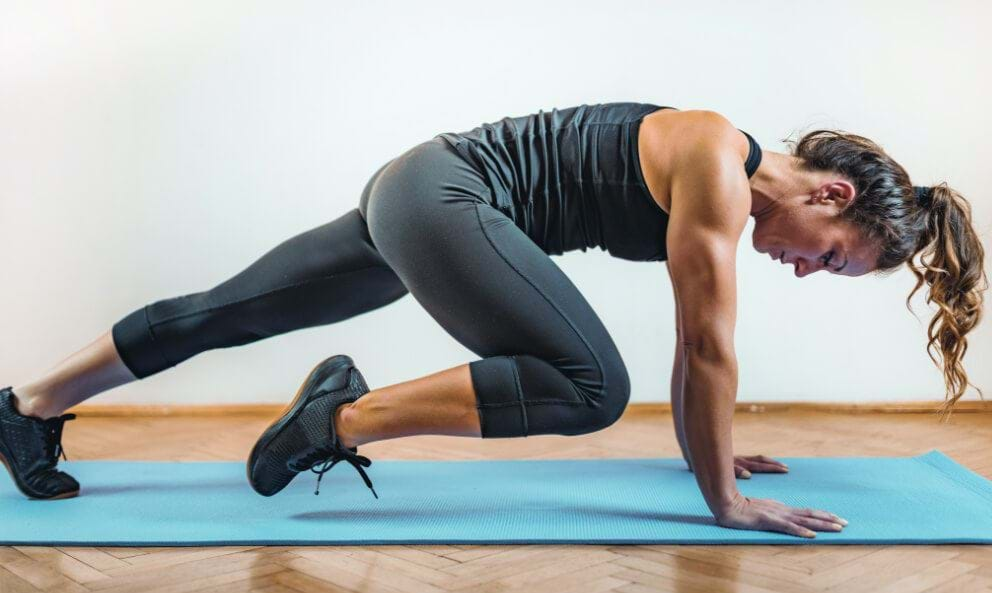If you’re looking for a super quick but tough workout, say hello to Tabata. It’s a short, sharp blast of exercise that gets you fit fast. Imagine doing a really intense exercise for 20 seconds, resting for 10 seconds, and then going again. You do this 8 times, and it only takes 4 minutes! Dr. Izumi Tabata came up with this idea, and it’s perfect for anyone who’s busy but still wants to get a serious workout in. Let’s see how Tabata can shake up your fitness routine in just a few minutes.

Contents
What Is Tabata Exercise?
Tabata is a type of high-intensity interval training (HIIT) workout known for its short bursts of intense exercise followed by brief rest periods. It’s named after Izumi Tabata, a Japanese scientist who developed this specific training method in the 1990s. Here’s a breakdown of what Tabata exercise is all about:
Structure:
- A Tabata workout typically consists of eight rounds of work and rest intervals.
- Each work interval lasts for 20 seconds, where you push yourself to perform an exercise at maximum effort.
- Following each work period, there’s a short rest period of 10 seconds.
- The entire workout, including both work and rest intervals, lasts for four minutes.
What Are the Benefits of Tabata?

Tabata training offers several benefits, making it a popular choice for those seeking a quick and effective workout:
1. Improved Cardiovascular Health: The high-intensity nature of Tabata workouts significantly elevates your heart rate. This repeated stress on your cardiovascular system improves its efficiency, leading to better overall fitness.
2. Increased Calorie Burning: Due to the intense effort involved and the afterburn effect (your body continues burning calories at an elevated rate even after exercise), Tabata workouts burn a high number of calories in a short amount of time. This can be helpful for weight management or fat loss goals.
3. Enhanced Anaerobic Endurance: Tabata focuses on short bursts of maximal effort, improving your ability to perform high-intensity activities for short durations. This can be beneficial for various sports or activities requiring short bursts of speed or power.
4. Time-Efficient: A four-minute Tabata workout is a fantastic way to squeeze in a quick and effective workout, especially for busy schedules. The short duration makes it easier to fit into even the most packed routines.
5. Versatility: Tabata can be done with a variety of bodyweight exercises, making it accessible with no equipment needed. This allows you to perform it anywhere, at home, the gym, or even outdoors. You can also modify exercises to target different muscle groups or adjust the intensity based on your fitness level.
6. Boosts Metabolism: Tabata training is known to have a positive impact on your metabolic rate. The intense exercise helps elevate your metabolism not just during the workout but also for some time afterward, potentially leading to increased calorie burning throughout the day.

7. Improves Strength and Muscle Tone: While not the primary focus, Tabata workouts can also help build and maintain muscle tone. The repeated effort of performing exercises at high intensity can stimulate muscle growth and improve overall strength.
8. Mental Toughness: The challenging nature of Tabata can help build mental toughness and resilience. Pushing yourself through the short bursts of intense exercise can translate into improved focus and determination in other areas of life.
9. Variety and Fun: Tabata workouts can be quite varied depending on the exercises you choose. This variety helps keep things interesting and prevents boredom, making it a more enjoyable way to exercise.
How to Do Tabata Exercise?
When incorporating Tabata into your workout routine, it’s important to understand the structure of this high-intensity training. Here’s a breakdown to guide you through your Tabata session:

1. Choose Your Exercises
Select 4 exercises that target different muscle groups. These can include bodyweight exercises like squats, push-ups, burpees, and mountain climbers.
2. Set Your Timer
Each Tabata round consists of 8 rounds of 20 seconds of high-intensity exercise followed by 10 seconds of rest. Timing is crucial to maximize the effectiveness of the workout.
3. Warm Up Well
Start with a 5-10 minute warm-up to prep your muscles for the intense workout ahead. Dynamic stretches and light cardio can help prevent injuries.
4. Get Ready to Intensify
Jump into your first exercise at a high intensity for 20 seconds. Push yourself to your limits during these short bursts of activity.
5. Embrace the Recovery
Use the 10-second rest wisely to catch your breath and prepare for the next round. Focus on controlled breathing to bring your heart rate down.
6. Repeat and Finish Strong
Cycle through all 4 exercises for a total of 4 minutes. Stay consistent with the intervals and push through the burn to make the most of your Tabata session.
The Difference Between Tabata And HIIT
Tabata and High-Intensity Interval Training (HIIT) are both popular workout methodologies known for their efficiency and effectiveness in improving cardiovascular fitness and aiding in weight loss. While they share similarities, such as incorporating short bursts of intense exercise followed by periods of rest, there are key differences between the two that cater to different fitness goals and preferences.

1. Time Structure:
- Tabata: This is a very specific form of HIIT with a rigid structure: 20 seconds of ultra-intense exercise followed by 10 seconds of rest, repeated for 8 cycles, totaling 4 minutes.
- HIIT: HIIT is more flexible in its structure. The intervals can vary greatly in duration, from a few seconds to several minutes, and the rest periods can also vary. A common HIIT workout might include 30 seconds to a few minutes of high-intensity exercise followed by a similar or shorter rest period, repeated for 20-30 minutes.
2. Intensity Level:
- Tabata: The intensity during the 20 seconds of work is meant to be maximal, pushing you to the limit of your capacity.
- HIIT: While HIIT also involves high-intensity intervals, the intensity can be adjusted based on the workout’s length and the individual’s fitness level.
3. Purpose and Goals:
- Tabata: Originally designed to improve the performance of Olympic speedskaters, Tabata is focused on improving both aerobic (cardiovascular) and anaerobic (muscle) systems simultaneously.
- HIIT: HIIT is used for a broader range of fitness goals, including fat loss, improving cardiovascular health, and increasing endurance. It can be tailored to focus more on aerobic or anaerobic systems depending on the workout’s design.
4. Types of Exercises:
- Tabata: Tabata can be applied to a wide range of exercises, including cardio and strength training, but the key is keeping the intensity at its maximum.
- HIIT: HIIT is also versatile and can incorporate various exercises, including cycling, running, bodyweight exercises, and more, with the intensity tailored to the workout’s specific goals.
Frequently Asked Questions
Who should consider Tabata workouts?
Tabata workouts are ideal for fitness enthusiasts looking to enhance anaerobic capacity, improve aerobic and anaerobic fitness levels, burn calories efficiently, and engage in intense training sessions. They are also suitable for individuals with busy schedules seeking quick and effective workouts.
How often should Tabata workouts be done?
It is recommended to perform Tabata workouts 2 to 3 times per week to maximize their benefits and see improvements in aerobic capacity, anaerobic fitness, strength, and calorie burning.
What are the benefits of Tabata workouts?
Tabata exercises can help improve heart health, build strength, burn fat efficiently, increase aerobic capacity, and enhance overall workout performance in a short duration of 4 minutes per round.
Is Tabata suitable for beginners?
While Tabata workouts are safe and effective, they may be challenging for beginners due to their high intensity. It is important to listen to your body, start at your own pace, and gradually build up endurance and intensity over time.

Hello, I’m Ravindra. Over the years, I’ve immersed myself deeply into the world of fitness and health, transforming both my body and mind. Writing has allowed me to share my journey, insights, and expertise with those just starting out and seasoned fitness enthusiasts alike. Beyond just routines and diets, I believe in inspiring others to adopt a holistic approach to well-being.
